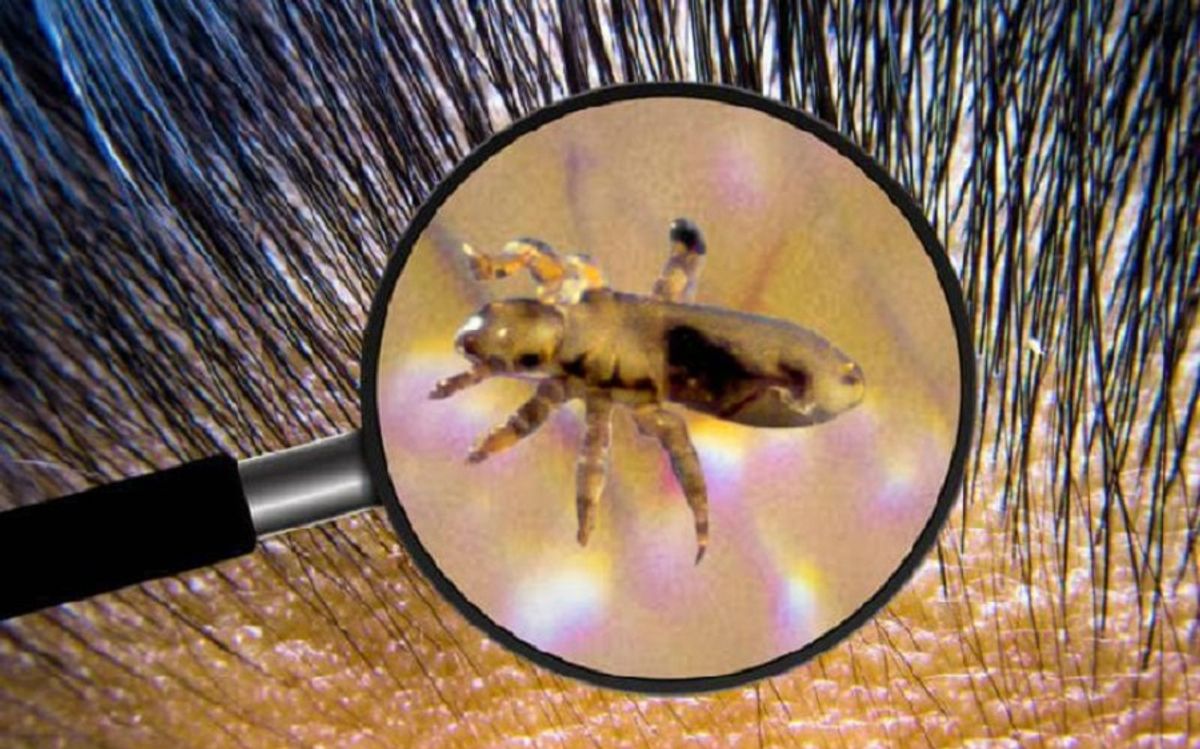The practice of using gasoline (or kerosene, naptha, benzine, or turpentine) to kill head and body lice is an old one -- references to it appear in medical journals as far back as 1917, with even those sources positioning that mode of treatment as a well established one. It therefore poses no mystery that this bit of medical
Moderately priced and highly effective licecides have been available for several decades now. While dousing a lice-riddled child's hair with gasoline might have been a somewhat valid treatment choice for those living in much earlier times, generations beyond that have had far better choices readily available to them.
However, although better treatments are easily obtainable, the practice of using gasoline against lice continues even to this day. "It was good enough for our great-grandmothers," some say, "so it's good enough for us. Great-granny swore by this treatment and never had any problems with it." For those who've been subject to home remedy knowledge passed down through their families, there's a sense of being one of the precious few who are in on something most of the general population is unaware of, and that sense of "I know something you don't" is a potent motivator to put that knowledge to use.
Beyond the allure of using a folk medicine cure from the distant past on a problem that exists in the here and now, an embarrassment factor likely adds to the persistence of gasoline use. Buying over-the-counter or prescription medications and preparations that treat lice means a trip to the pharmacy and the public purchase of concoctions that by their very nature reveal what they're to be used for. An element of shame attaches to this sort of infestation, as lice have long been associated with unclean homes and bodies. By using gasoline rather than openly-purchased products meant to kill lice, one can avoid the (presumed) hard stares of the pharmacy clerk and surrounding shoppers.
Yet whatever the motivation, using gasoline to kill head lice is not a good idea. This practice is dangerous, and over the years many people have been severely burned and scarred for life thanks to it.
The fumes let off by gasoline can (and do) ignite in the presence of even the smallest spark or flame. All it takes is an errant spark from an electrical appliance, a lit cigarette, or a pilot light in a stove or water heater to turn a child into a fireball. The fuel's fumes (rather than the liquid itself) ignite, which means human conflagration is touched off not by a flame coming in contact with gasoline-soaked hair, but by gasoline-soaked hair being in the same room as the flame or spark.
These following cases reported in the news present a list of some of the human tragedies that have resulted from the practice of attempting to combat lice infestation with gasoline:
- In February 2009, 18-year-old Jessica Brooks of Evansville, Indiana, suffered second- and third-degree burns over more than half of her body after the pilot light of the nearby water heater ignited the gasoline she'd used on her hair.
- In September 2003, 13-year-old Koran Jenkins of Berkeley, California, had burns over a quarter of his body after his gasoline-soaked hair was ignited by a spark from the stove's pilot light. The boy's right hand, which sustained fourth-degree burns, was so badly damaged doctors had to amputate all his fingers. He also lost two fingers from his left hand. He spent more than two months in the hospital and underwent eight surgeries, including many skin grafts.
- In August 2000, 12-year-old Stephanie LeBlanc of Aurora, Colorado, had second- and third-degree burns to over a quarter of her body after gas stove ignited the fumes from her gasoline-soaked tresses.
- In October 1998, a 4-year-old girl living in Davie, Florida, suffered second-degree burns on her head with blistering and peeling after the fumes from the gasoline wafted over the stove's pilot light.
- In July 1997, 13-year-old Terry Adams of Des Moines, Iowa, was seriously burned when the pilot light from the home's water heater ignited the gasoline fumes.
- In September 1996, an 11-year-old girl living in Merrimac, Wisconsin, suffered severe burns to her hands, arms and face and
30 percent of her body after the pilot light from the stove ignited the gasoline used on her. - In September 1995, 12-year-old Tabitha Kalvas and her 40-year-old mother, Alma Homea, of Fort Worth, Texas, were both ignited by the gasoline used in the home remedy. The child had burns to
80 percent of her body, and the mother had burns to70 percent. It's possible the mother was smoking while pouring the gasoline on her daughter's head to rid her of lice. - In April 1992, 16-year-old Jamie Lewis of Tulsa, Oklahoma, endured second- and third-degree burns over as much as
90 percent of her body after the pilot light in water heater ignited her hair. - In October 1989, a 5-year-old girl living in Pendleton, South Carolina, was taken to hospital in critical condition after the gas fumes were ignited by the pilot light in a gas stove.
Even when its fumes don't ignite, gasoline can irritate the scalp and produce painful burning.
The route to safely and effectively ridding oneself or one's children of lice typically begins with over-the-counter products that fall into two categories: permethrins (including Nix rinse) and pyrethrins (including Pronto and Rid shampoos). Doctors urge the reapplication of these products seven to ten days after initial treatment. For persistent or especially resistant infestation, two prescription-only treatments are available: lindane
Bedding and toys need to be washed at high heat or dry cleaned as well.

